B
CubeSat Publications—Descriptive Statistics
INTRODUCTION
The purpose of this section is to review and assess publications related to CubeSats, in support of Chapter 4. Two types of publications are of interest. The first set includes publications (both reviewed and conference contributions) that introduce enabling technologies and novel mission designs. Such publications appear in a wide variety of engineering and scientific journals. The second set of publications contains those that document the scientific findings emerging from CubeSats. The latter papers are published only after CubeSats have operated for an adequate amount of time and the data are analyzed and interpreted. Given the recent emergence of CubeSats, one would therefore expect a high number of the first type of publications, followed with a delayed and possibly smaller number of the second kind.
NUMBER OF PUBLICATIONS
Due to the fast growth and diversity of the communities involved in CubeSats (see Chapter 1), there is currently no authoritative count of publications that have come from this platform. A search of the scientific citation indexing service Web of Science (WoS) with the keyword “CubeSat*” in all topics1 results in 959 publications, the first of which was published in 2000.2Figure B.1 shows the distribution of these publications: 724 of the publications cite engineering as a research area, and 29 have education or educational research as a keyword.
Excluding all records that are not cataloged as articles leaves 290 publications. Figure B.2 shows how these articles are distributed in time and highlights the rapid and nearly exponential increase in the number of articles since 2007. These articles fall in over 40 topical areas, but the majority (219, or over 75 percent) list engineering as the research area (potentially among others). The scientific topic area with the largest number of articles was astronomy/astrophysics, with 71 records, which includes a significant number of publications in solar and space physics. There were 7 articles that listed education research as a topic area.
___________________
1 The search included the following Web of Science databases: Web of Science Core Collection, Inspec, Current Contents Connect, KCI-Korean Journal Database, and MEDLINE.
2 It is important to note that not every paper based on research conducted via CubeSats lists the term in the publication. It may, for example, use the term “nanosatellite,” or even “small satellite.” So a search on the term “CubeSat*” alone is a likely undercount of the publications based on CubeSats.
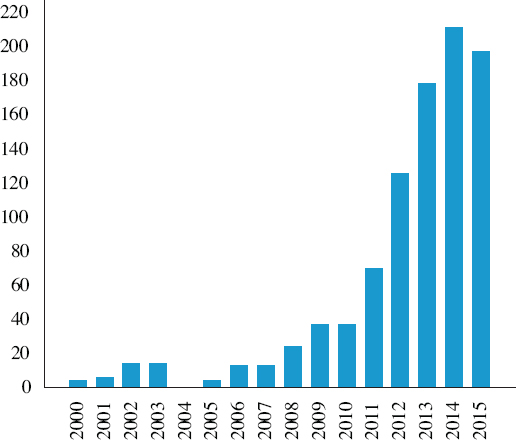
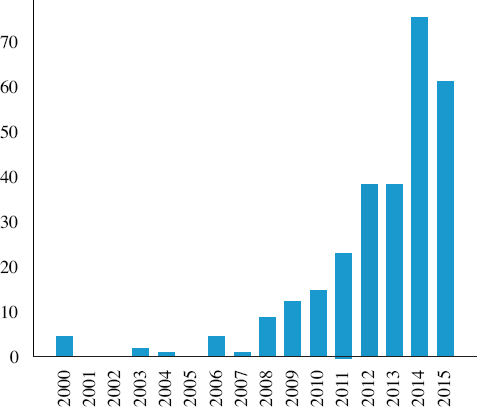
A search on a different scientific citation indexing service, Scopus, leads to a different number of publications. A search on the term “CubeSat*” in Scopus results in 2,283 records. This number is likely higher because Scopus covers more engineering journals and conference proceedings than does WoS. Limiting the search to Abstract, Title and Keywords leaves in 1,264 records.
Selecting only articles results in 202 records. As with WoS, the bulk of the papers (170) are characterized as engineering, followed by Earth and planetary science (49). And as with WoS, there is steep increase in the number of publications in recent years (Figure B.3). Scopus follows a different classification scheme than does WoS, and the papers cover 19 scientific disciplines. However, the top research area of publications remains engineering (Figure B.4).
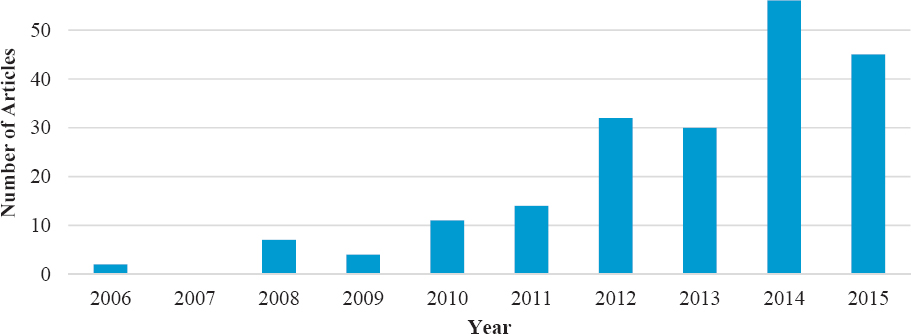
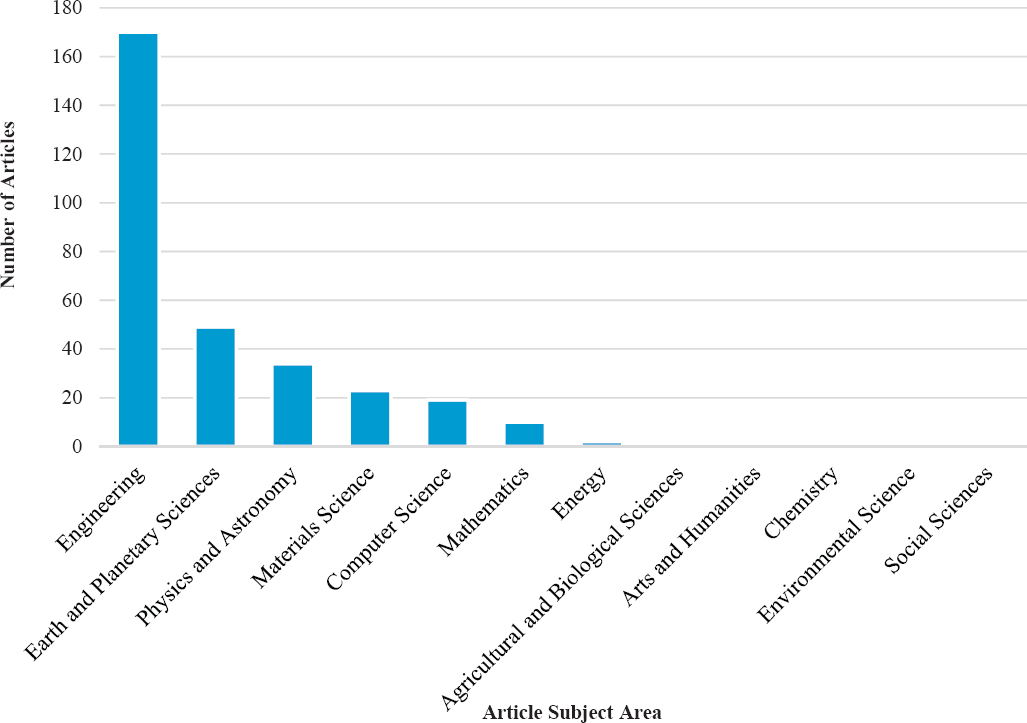
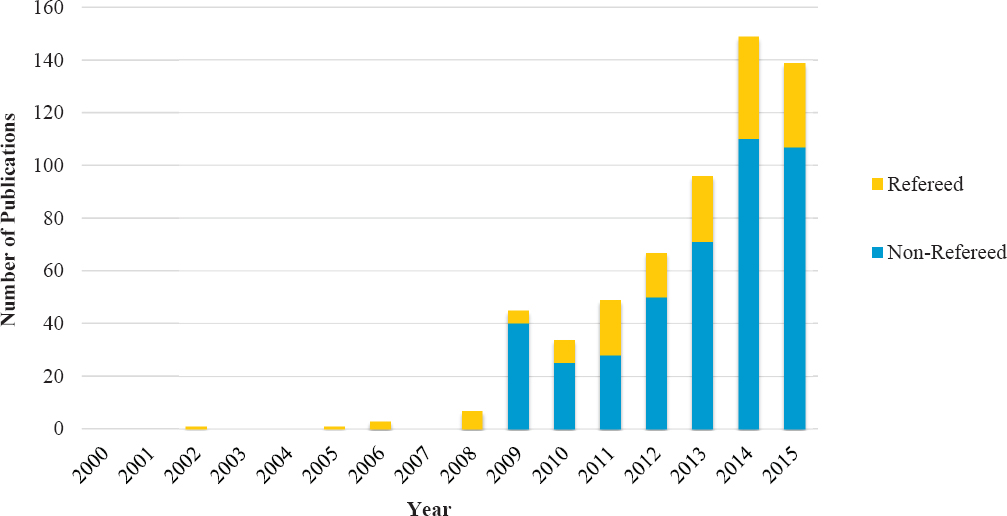
A third source used to catalog CubeSat publications was the Smithsonian Astrophysical Observatory/NASA Astrophysics Data System, which includes a much broader set of journals than might be implied by the title. Searches were conducted using the terms “CubeSat” or “CubeSats” in either the title or abstracts of each entry. This search leads to a total of 536 publications, 160 of which are refereed journal papers (Figure B.5).
The 160 refereed papers were manually classified into seven categories: engineering; astronomy and astrophysics; solar and space physics/heliophysics; planetary science; Earth sciences, biological sciences, and other. As Figure B.6 shows, almost three-quarters of these papers are engineering oriented; 41 publications are devoted to the five scientific fields of interest.3
Figure B.7 presents a time series of these 41 refereed papers in the five scientific fields of interest, and it shows that over the years, heliophysics has been the dominant field of publication, with planetary science, astronomy, and biology entering the domain in recent years.
___________________
3 The category “other” includes publications on policy or educational topics or survey-type articles.
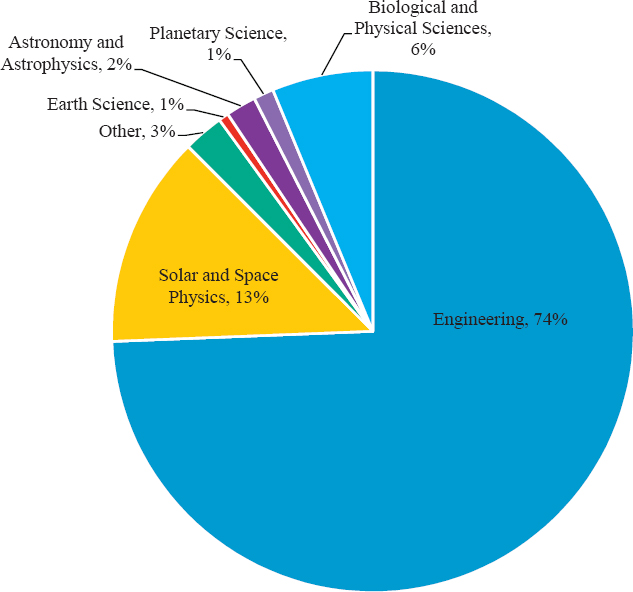
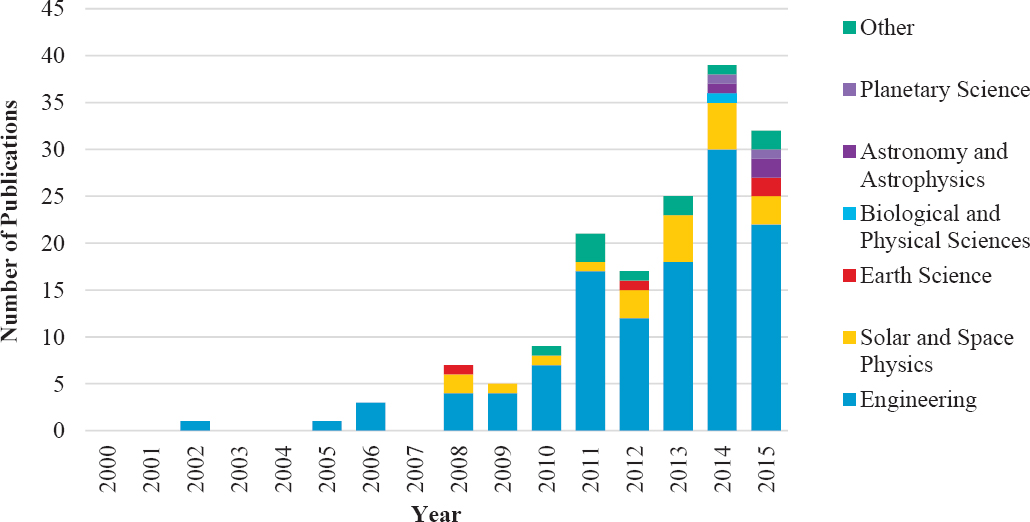
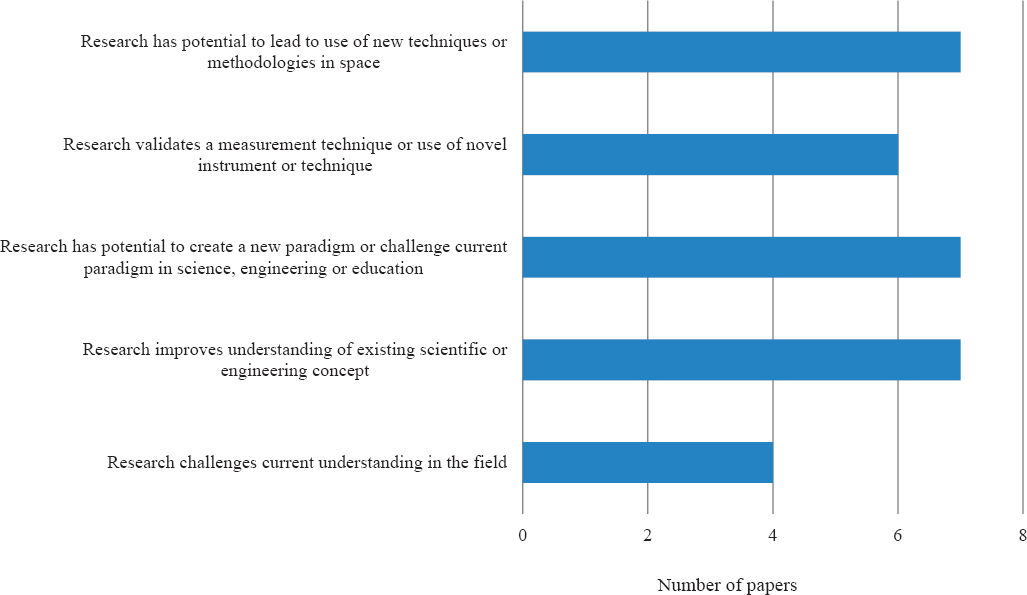
QUALITATIVE ASSESSMENT
Although the committee identified only 41 scientific publications based on CubeSats,4 it is important to note that refereed papers are being published, and some of them have important consequences for the understanding of science in solar and space physics (see Chapter 4 for examples).
A subset of 15 of these papers were reviewed qualitatively by the committee to assess impact. Naturally, the depth of scientific impact of these papers is aligned with the availability of science-focused CubeSats that are in flight, which is dominated by solar and space physics and heliophysics (out of the set, 9 publications were in the domain of solar and space physics). Refereed publications in astronomy and astrophysics or planetary sciences are mostly focused on the description of new measurement techniques or data strategies enabled by CubeSats.
The result of this qualitative analysis is provided in Figure B.8. Committee members rated the contributions of the research in five categories: research that challenges current understanding; research that improves understanding; research with the potential to create a new paradigm in science, engineering, or education; research that validated a measurement technique; or research that could lead to new methodologies in space. Overall, the scien-
___________________
4 These papers were gathered from the previously mentioned literature searches, from publication lists sent by the NSF CubeSat program teams, and from the committee’s request to attendees of the community input symposium in Irvine, California.
tific benefit of CubeSats was spread across a small number of topics. CubeSats had the potential to be paradigm altering or to improve understanding of the underlying physical processes that were studied. Yet, the engineering and educational impact was considered to be important for many of the investigations, especially because a number of them proved new technologies or instrument techniques.







